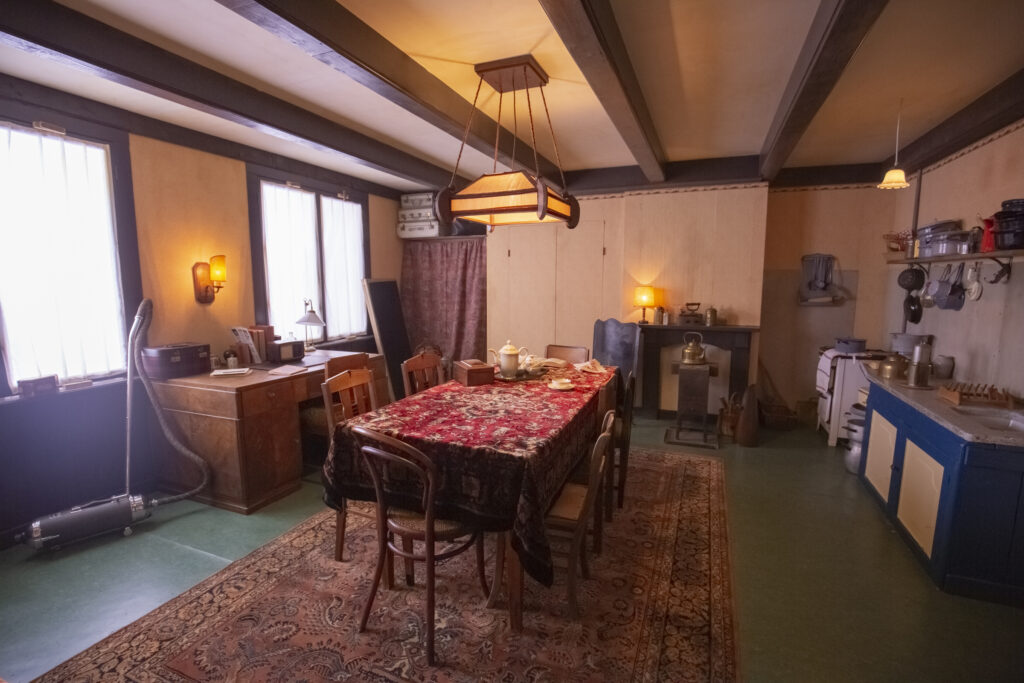For the first time in its history, the Anne Frank House, one of the most visited historical sites in all of Europe, will present an experience outside of Amsterdam, offering people in New York the chance to walk through a full-scale recreation of the room that Frank, her parents, her sister and four other Jews spent two years in hiding from the Nazis during World War II. The massive exhibit will take over the 7,500-square-feet of space that make up the Center for Jewish History at 15 West 16th Street by Fifth Avenue in Union Square.

Given the current world order, one heavily affected by a global rise in antisemitism, the effort by the nonprofit organization feels more important than ever before, especially since it will debut on January 27, 2025, International Holocaust Remembrance Day and the 80th commemoration of the liberation of Auschwitz. The exhibit is scheduled to close on April 30, 2025.
“‘Anne Frank The Exhibition’ is a first-of-its-kind, full-scale recreation of the complete Annex, furnished as it would have been when Anne and her family were forced into hiding,” reads an official press release. “Moving through the exhibition, visitors will be able to immerse themselves in the context that shaped Anne’s life—from her early years in Frankfurt, Germany through the rise of the Nazi regime and the family’s 1934 move to Amsterdam, the Netherlands, where Anne lived for ten years until her 1944 arrest and deportation to Westerbork, a large transit camp in the Netherlands, then to Auschwitz-Birkenau, a concentration camp and killing center in Nazi-occupied Poland, and eventually to her death at Bergen-Belsen concentration camp in Germany when she was 15 years old.”
In addition to walking through the recreated quarters, guests will look through videos and photos while also coming face-to-face with over 100 original collection items from the Anne Frank House in Amsterdam, including Frank’s first photo album, her typed and handwritten invitation sent to a friend for a film screening in her home (in 1942, Jews weren’t allowed to go to the movies) and more.
Designed for folks who have not been able to visit the Netherlands in the past, the exhibition will feature plenty of the artifacts that have yet to be seen by the public. The idea isn’t to shock audiences—despite the terrifyingly shocking nature of the subject at hand—but, perhaps, to teach them about what has been and what could still be.

“As a custodian of Anne’s legacy, we have an obligation to help world audiences understand the historical roots and evolution of antisemitism, including how it fueled Nazi ideology that led to the Holocaust,” said Ronald Leopold, the executive director of the Anne Frank House, in an official statement. “Through this exhibition, the Anne Frank House offers insights into how this could have happened and what it means for us today. The exhibition provides perspectives, geared toward younger generations, that are certain to deepen our collective understanding of Anne Frank and hopefully provide a better understanding of ourselves.”
The original Anne Frank House was set up back in 1957 in cooperation with Otto Frank, Anne’s father, and is clearly an authentic representation of the plight that the family had to suffer. As has been chronicled since, the Annex is where Anne actually wrote the diary that the late Otto published after she passed. The New York exhibition feels like another way to honor the victim and her family while warning the world around us about the brutality that antisemitism and hate can lead to.
Tickets for “Anna Frank the Exhibiton” are available here.



